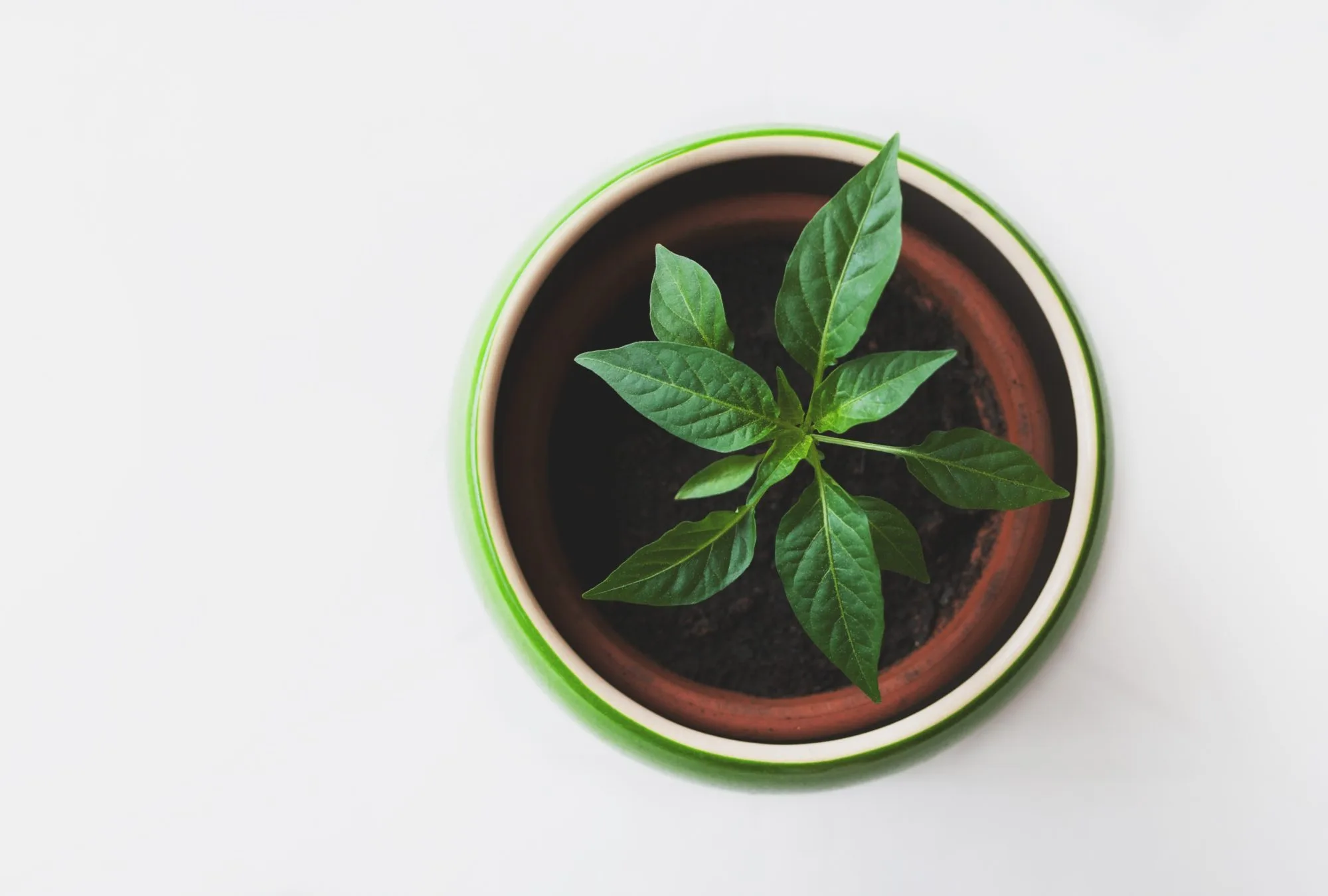The first few tiny leaves growing on a wild rocket plant can pack quite a punch in terms of health benefits. This is even more so when such micro-greens are grown under constant high lighting, says Stellenbosch University plant researcher Dr Bianke Loedolff.
Dr Loedolff studies natural ways that can be used to bio-fortify or boost food plants so that these can be used as functional foods to provide even greater nutritional or health benefits to those eating them. She works in the Institute for Plant Biotechnology in the Department of Genetics, in Stellenbosch University’s (SU) Faculty of AgriSciences.
Loedolff is especially interested in so-called micro-greens – the very first two to four tiny true leaves that grow on a plant. Her research on the micro-version of rocket salad was published in the journal Functional Foods in Health and Disease. It was conducted along with SU colleagues Dr Marietjie Stander, Dr Shaun Peters, Prof Jens Kossmann, as well as BSc Hons graduate Jolene Brooks.
Through her research, she successfully adapted a known method using intense lighting to biofortify and substantially increase the nutritional value of micro-green rocket leaves. She believes the method could quite easily be adapted for use in greenhouses or in home gardens.
The benefits contained in plants
As they grow, plants accumulate a variety of biological compounds called phytochemicals in their leaves. These most often have nutritional value. Research has shown that so-called micro-greens (the first four tiny leaves that a plant sprouts) are even healthier to eat, because phytochemicals hyper-accumulate in them as part of a plant’s natural protective measures.
“The first growth of micro-greens of most plants are packed with nourishment and can contain up to ten times more phytochemicals than their mature counterparts,” Loedolff explains findings from recent studies done elsewhere in the world.
It is known that when plants are stressed (for instance because of a lack of water, extreme sunlight or because of the addition of specific minerals), they release more phytochemicals in an effort to protect themselves. Researchers are now using these techniques to see whether they can successfully be used in the food industry to naturally stimulate or bio-fortify plant growth.
The current study
Loedolff bought wild rocket seeds at a local nursery and then set out to grow two groups of seedlings in the growth facilities of the Institute of Plant Biotechnology on the campus of Stellenbosch University.
The first group was grown under normal conditions (comparable to growing plants indoors in a shady spot), and the second using specialised light bulbs for plant growth that are three times more intense (similar to what plants growing on a windowsill in full sunlight will experience).
The leaves were then picked and analyzed in search of possible compounds with health benefits. The beneficial compounds previously noted in mature rocket varieties were present in much greater concentrations in the micro-green leaves. Other compounds detected (such as resveratrol, catechin, epicatechin, and kaempferol) had not previously been known to occur in wild rocket.
“Resveratrol is a compound commonly found in grape skins that is said to have a protective effect on the heart,” notes Loedolff.
According to Loedolff, it is quite possible to take in most of these healthy compounds as part of a very regular diet of mature vegetables such as broccoli, kale and Brussel sprouts. “In contrast, immature plants, grown to a micro-stage of two to four true leaves, accumulates significantly higher amounts of phytochemicals, and therefore you do not need so much to get the same benefits,” says Loedolff. Click here for more benefits of the rocket plant.
You can grow your own salad leaves
She believes it would be quite easy for people to grow their own salad leaves in a similar fashion at home, provided that they have a strong enough light source and are able to foot the electricity bill that would come with shining a light on the plants they are hoping to eat. It could also help to grow plants in a spot where they receive daylong full sunlight.
“Bio-fortifying various micro-greens into functional foods should become part of the package that we use to help prevent non-communicable diseases,” Loedolff further says. She is now testing whether some of the compounds extracted from bio-fortified wild micro-rockets has an effect on a range of diseases, such as cancer cells.
Did you know?
- Wild rocket or arugula (Diplotaxis tenuifolia) has its roots in the Mediterranean.
- This salad leaf is known for its peppery aroma and pungent taste.
- The pungent taste is ascribed to the phytochemical glucosinolates in the leaves.
- It is most often eaten raw in a salad or on a pizza.
- Rocket is part of the Brassica family of vegetables and leafy greens, which also contains Brussel sprouts, broccoli, kale, and watercress among others.
What is the difference between micro-greens and sprouts?
Micro-greens are the very first tiny leaves that grow from a plant. Sprouts, on the other hand, refer to seeds that have just started to germinate.




The premise that microgreens are leaves is simply wrong. A microgreen is a young seedling that consists of a central stem with leaves attached. Comparing arugula microgreens grown in simulated shade to those grown with artificial lights is a good way to prove that shade-grown arugula has less nutrition. Arugula is not a shade plant. When grown on a real farm, it is grown in sunlight, not shade. The correct comparison should be arugula grown in the sun, compared to arugula grown with artificial lights. Most likely the result would be in favor of that grown in natural sunlight, which by the way is free!
We have sent through all the information Saritha. Thank you for your interest.